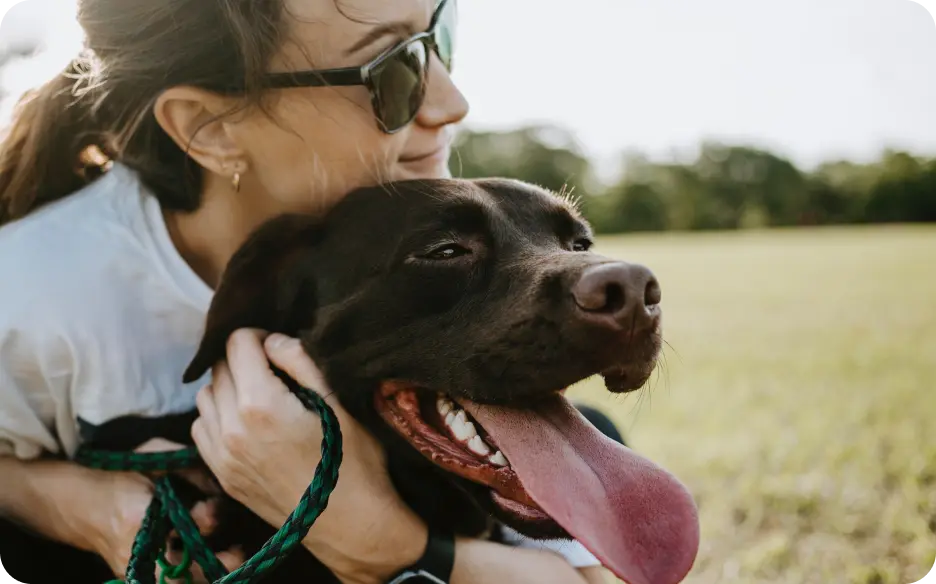A torn ACL, or anterior cruciate ligament, is a common injury in dogs, particularly in larger breeds. This injury often leads to significant pain and mobility issues, raising concerns among pet owners about their dog’s quality of life. Understanding the implications of a torn ACL and how to manage it can greatly impact your dog’s well-being.
Understanding the Injury
When a dog suffers a torn ACL, pet owners typically feel immediate worry. Observing a furry friend limping or struggling to rise prompts questions about the injury’s severity. An ACL tear can result from sudden movements or gradual wear over time. Older dogs or those with pre-existing conditions are often more vulnerable to this type of injury.
Living with a Torn ACL
For many dogs, living with a torn ACL is possible, especially with appropriate management. The extent to which a dog can live comfortably with this condition largely depends on several factors, including the severity of the tear, the dog’s overall health, and the available treatment options.
In mild cases, some dogs may continue their daily activities with minimal discomfort, as the body can sometimes adapt by using other ligaments and muscles to compensate for the injured ACL. However, this is not a lasting solution. Over time, compensating for the injured leg can lead to additional problems in other joints, such as the hip or opposite knee, due to increased strain.
For active or high-energy dogs, a torn ACL can significantly affect their lifestyle. Playtime, walks, and even simple movements like rising from rest can become challenging. Managing pain becomes crucial, and pet owners often navigate the complexities of veterinary care, physical therapy, and, in some cases, surgery.
Treatment Options
Veterinary professionals typically recommend various treatment options based on the tear’s severity. In certain instances, rest and physical therapy may suffice to help a dog regain strength and mobility. For others, particularly those with complete tears, surgical intervention may be the best course of action. Surgical options usually involve repairing the damaged ligament or stabilizing the knee joint through various techniques. The decision often hinges on the dog’s age, activity level, and overall health.
Post-surgery, the recovery process can be lengthy. Dogs generally require several weeks of restricted activity, followed by physical therapy to regain strength and mobility in the affected leg. This period can be challenging for both the dog and the owner. Dogs may become frustrated with their limitations, and owners might struggle to manage their pet’s energy levels during recovery. Patience and consistency are essential during this phase.
Ongoing Management and Adjustments
Regardless of the chosen treatment, ongoing management is vital. Many veterinarians advocate for a structured physical rehabilitation program tailored to the individual dog’s needs. This may include exercises to enhance strength, flexibility, and range of motion, along with activities promoting overall fitness without putting undue stress on the injured leg.
Pet owners should also consider making adjustments to their dog’s environment. Simple changes, such as providing non-slip surfaces in the home, can help prevent slips and falls that may worsen the injury. Using ramps for entering and exiting vehicles or furniture can also be beneficial. These modifications contribute to a safer living space for a dog recovering from a torn ACL.
The Role of Diet and Emotional Well-being
Diet plays a crucial role in recovery. A balanced diet supports healing and maintains a healthy weight, which is essential for reducing stress on the joints. Overweight dogs face a higher risk for joint issues, making proper nutrition even more critical during the healing process.
The emotional impact of living with a torn ACL deserves attention as well. Dogs are sensitive creatures, and changes in their activity levels can affect their mood and overall happiness. Engaging in gentle, low-impact activities like short walks or play sessions that don’t strain the injured leg can help uplift a dog’s spirits during recovery. Mental stimulation through puzzle toys or training sessions provides an outlet for energy and helps prevent boredom.
Support and Community
Pet owners may feel overwhelmed when their dog sustains an injury like a torn ACL. Seeking support from friends, family, or online communities can offer comfort and shared experiences. Learning from others who have faced similar challenges can provide valuable insights and encouragement.
The Path Forward
With the right care, many dogs can lead fulfilling lives after a torn ACL. While the journey presents challenges, the bond between a dog and its owner can strengthen through the experience. Regular check-ups with a veterinarian are essential for monitoring the healing process and making necessary adjustments to the treatment plan. Maintaining open communication with your vet can provide peace of mind and ensure your dog is on the right path to recovery.
A torn ACL is a serious injury, but many dogs can adapt and live with it, especially with proper management. The road to recovery may be long and sometimes difficult, but with love, patience, and the right approach, dogs can regain their mobility and happiness once again.



